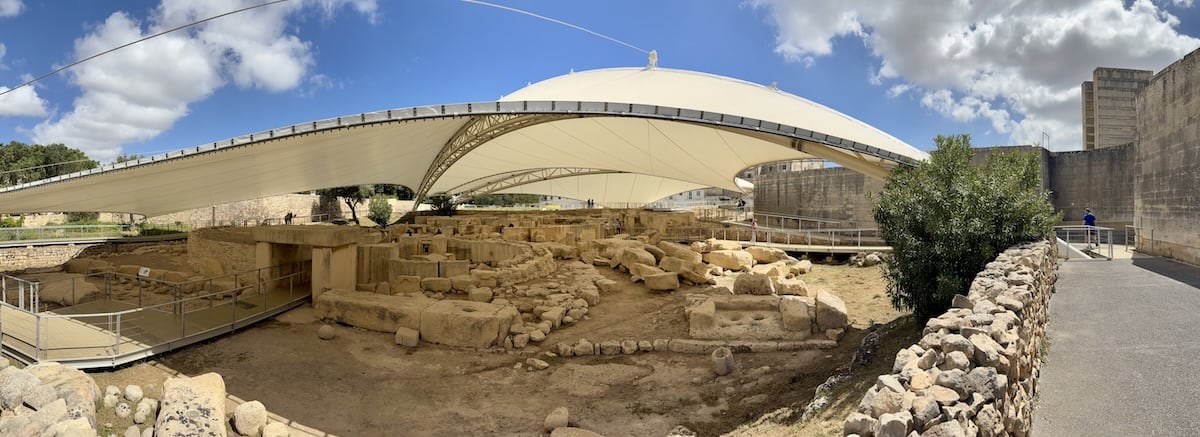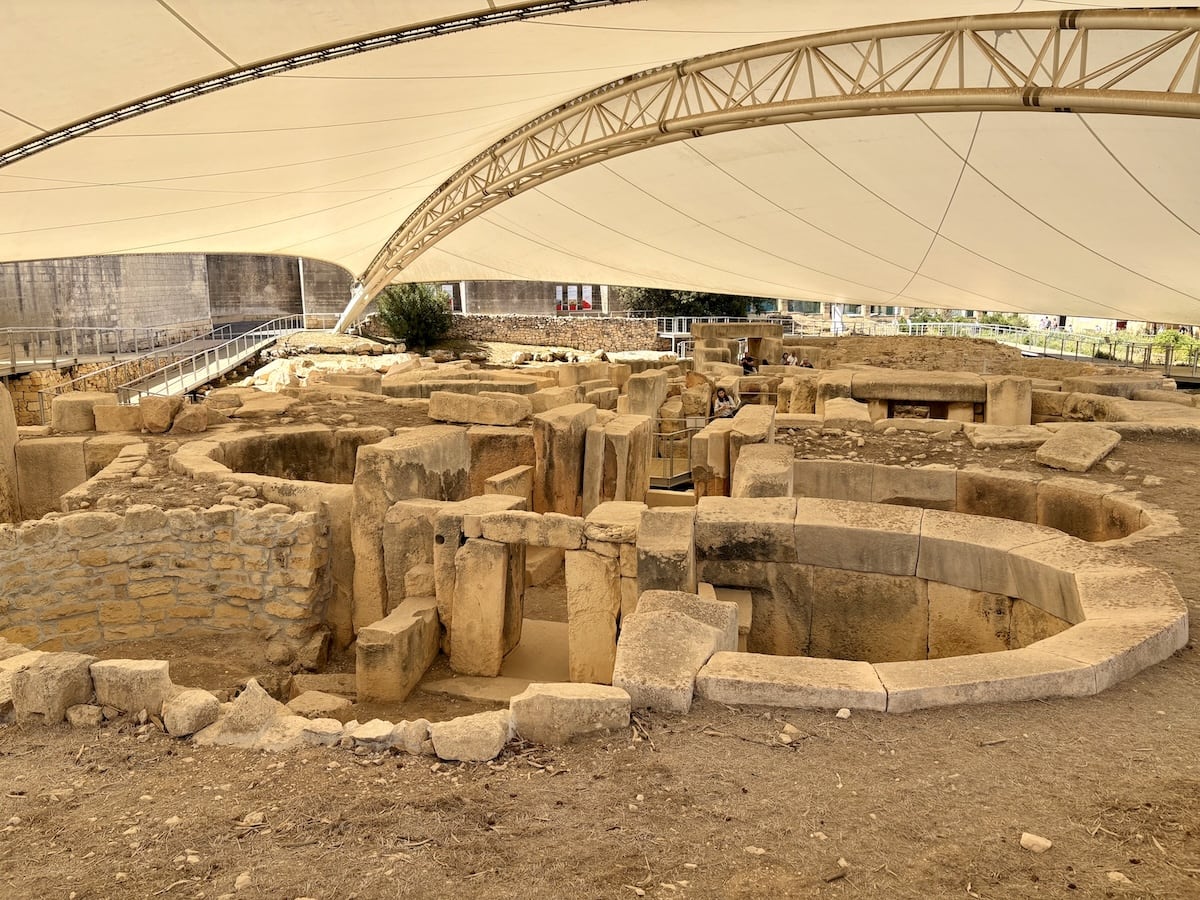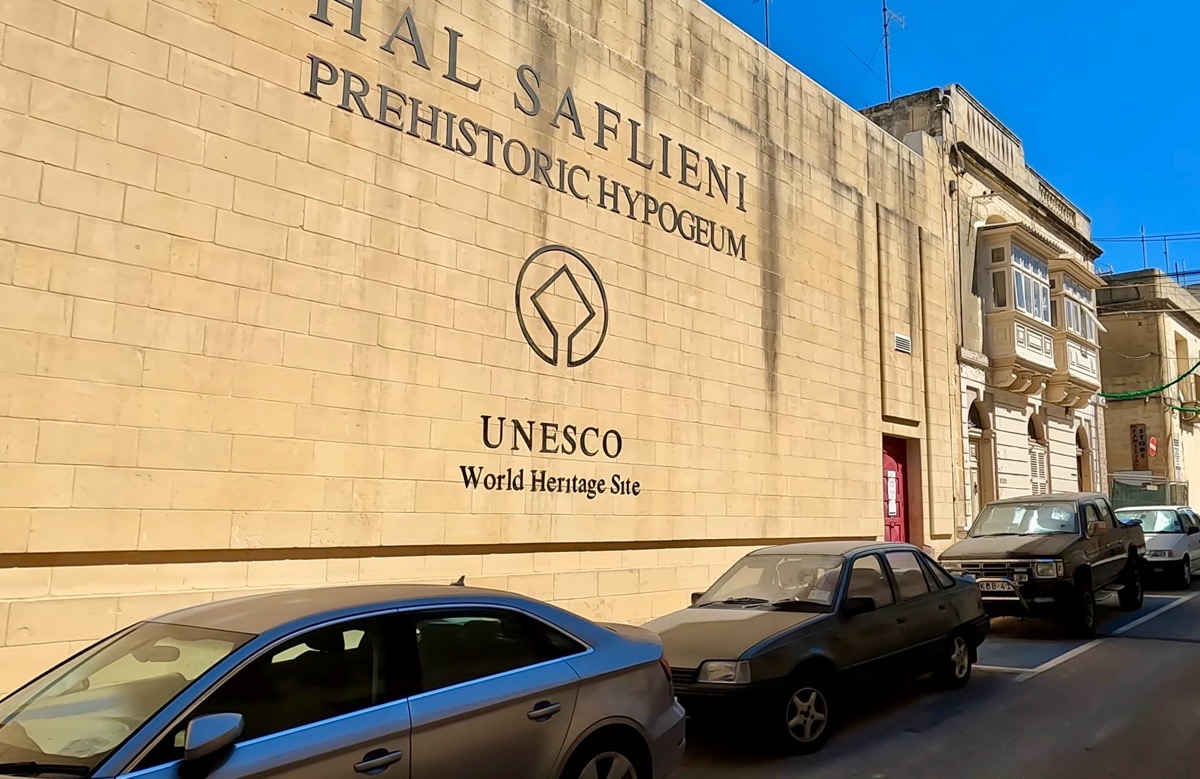The Tarxien Temples, located in the town of Tarxien in southeastern Malta, stand as some of the most fascinating remnants of the island’s prehistoric past.
Dating from around 3150 BC, they form part of Malta’s group of megalithic structures recognized as a UNESCO World Heritage Site. For anyone with a passion for ancient history or simply an interest in unique archaeological wonders, these temples offer a rare glimpse into the lives of the people who once lived here.

Carved stones and complex layouts
Discovered by accident in 1914 when a local farmer began clearing rubble from his fields, the site quickly captured the attention of archaeologists. Excavations revealed not only intricately carved stones and complex layouts but also clues to the spiritual and daily practices of Malta’s prehistoric inhabitants.
Many of the limestone blocks are adorned with spiral motifs and animal depictions that point to a well-developed culture capable of sophisticated artistic expression. Some of the statues found here suggest a possible focus on fertility, as they depict large, full-figured forms believed to represent a mother goddess.
Big, bigger, biggest
One of the first things that catches the eye at the Tarxien Temples is the sheer size of some of the stones. Despite being shaped and moved thousands of years ago using only basic tools, they are fitted together with striking precision. Walkways guide you through the interconnected temple chambers, each of which seems to reveal something new about the creativity and devotion of the people who built them. Large protective canopies help safeguard this national treasure from the elements, preserving the fine details of the carvings for generations to come.
Aligned in Malta’s layered history
For first-time visitors, the on-site interpretation center provides valuable context, explaining the timeline of Malta’s temple-building culture and displaying artifacts uncovered during excavations. Regular visitors often find that repeated trips allow for a deeper connection with the site’s layered history. Each return can bring fresh insight, whether it’s noticing a previously overlooked carving or understanding more about the site’s alignment with seasonal changes. Archaeologists are still piecing together theories about how exactly these temples were used, leaving room for a sense of mystery that keeps people coming back.
In the Lost Guardian of Malta: these temples are more than remnants —they are gateways to lost knowledge. The story teases the idea that Ħaġar Qim and Tarxien hold a secret, connecting them to other megalithic sites across the globe.
If you explore beyond the primary structures, you’ll notice how the Tarxien Temples are part of a broader archaeological landscape. A short distance away are other ancient sites like Ħal Saflieni Hypogeum, which offers a subterranean perspective on Malta’s prehistoric era.
The proximity of these neighboring landmarks hints at the island’s deep and interconnected spiritual traditions, suggesting that Tarxien was not an isolated place of worship but rather one of many significant locations where rituals and gatherings could have taken place.
Prehistoric culture
 Although the site itself is not large, its importance in unraveling Malta’s ancient narrative is immense. Walking through the stone passages, you can imagine the temple builders planning construction with remarkable accuracy, aligning certain parts of the structure with the sun’s path or the changing seasons. This sophistication reflects an advanced level of communal organization and shared beliefs, making Tarxien not just an archaeological curiosity but a testament to a flourishing prehistoric culture.
Although the site itself is not large, its importance in unraveling Malta’s ancient narrative is immense. Walking through the stone passages, you can imagine the temple builders planning construction with remarkable accuracy, aligning certain parts of the structure with the sun’s path or the changing seasons. This sophistication reflects an advanced level of communal organization and shared beliefs, making Tarxien not just an archaeological curiosity but a testament to a flourishing prehistoric culture.
Accessible
While modern conservation efforts focus on ensuring the temples remain intact, the authorities also strive to balance preservation with visitor accessibility. Raised walkways let you view the intricate stonework without disturbing the fragile floors. Interpretive plaques offer clear explanations, and updates are added as new findings come to light. This approach makes Tarxien both a well-managed heritage site and an evolving center of research, appealing to those who want to learn about ancient civilizations in an authentic setting.
Whether it’s your first time encountering the temple’s massive carved blocks or your tenth visit spent lingering over newly discovered details, Tarxien remains a window into a world that existed thousands of years before our own. The remains of statues, altars, and artful spirals speak of a people who understood the land, the seasons, and perhaps even the broader cosmic cycles in ways we are still striving to understand today. As you leave the site, the quiet fascination that lingers is a reminder that history is never fully told—it’s an ongoing story that invites you to keep asking questions, to keep wondering, and to keep coming back.
All information about visiting, opening hours and ticket prices can be found on the dedicated website of Heritage Malta.



